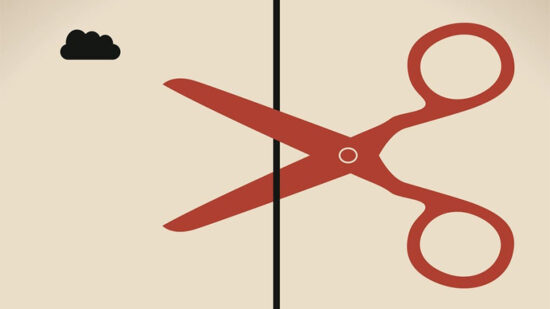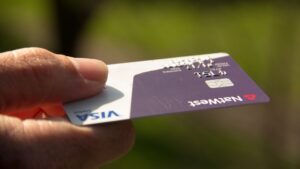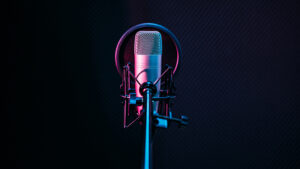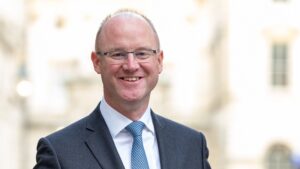And, while many investors continue to deliberate over how wary they should be of the economic recovery falling short of predicted levels, there are some that believe markets should be more concerned about a possible fall-out from global growth surpassing expectations.
That is the stance of Bill McQuaker, co-head of multi-asset at Henderson Global Investors, who outlined the danger of central banks’ hands being forced into tightening cycles and the subsequent tremors that would cause.
“The thing that markets should be most worried about is the exact opposite of what people have been talking about for the last nine months,” he said. “This is the paradox – the worst thing that could happen to world financial markets is that the real economy comes back to normal and then keeps going.”
McQuaker highlighted the market’s tendency to give credence to headline CPI figures over core inflation as a key flaw that could have a decisive impact on whether central banks implement interest rate rises.
“The idea of watching what headline inflation is doing is absolutely nonsensical,” he expanded. “Core inflation is relatively stable in the US, Europe and the UK, which maybe indicates that the inflation story is significantly overplayed – it has not gone through to core inflation.
“A better recovery than expected means that policy response has gone too far and the central banks need to start raising interest rates and stop printing money.”
However, for every view there is a counterview, and Richard Philbin, chief investment officer at Harwood Capital, is convinced that there is a way to go before an interest rate rise appears on the horizon.
“Economies are not working as well as they should be, and therefore interest rates are not going to go up anytime soon,” he said. “The Federal Reserve rate rise keeps getting pushed back – if the US is not in a position to raise rates then what is there for the rest of us?
“Interest rates will stay lower for longer because there is no pressure for them to rise. We have ‘no flation’ in the UK and Europe, so where is the pressure on companies to raise salaries and individuals to go and spend today when things could be cheaper tomorrow? If rates rise then any growth that there is will be trampled on.”
Jonathan Gumpel, manager of the Brooks Macdonald Defensive Capital Fund, is less assured in his outlook – he prefers to take a more distant vantage point, and is open to the possibility of the market turning either way.
“The global recovery so far has been based on currency devaluation,” he expanded. “The big question is whether or not the US economy is strong enough to cope with the dollar rise.
“We have only had the first stage of the recovery, and if the US is strong enough then it can serve as the anchor for that to continue because the other economies have a leg on which to maintain currency weakness.”
Gumpel believes that it is a toss-up between three potential outcomes, all of which are viable prospects.
“It is a really difficult situation,” he said. “We are all waiting with baited breath to see if the US recovery can be a linchpin for a wider recovery.
“On one hand we have such a highly-levered global economy that most of the central bank firepower has already been used and there is not much to protect us if there is ongoing downturn. US growth figures for the last quarter were much weaker than expected, and without inventories it would have been the first half of a recession. If that was the US economy responding to dollar strength then it is concerning.
“If, as in the previous year, it was weather-related weakness, if the economy was going great guns then it would be able to cope. That said, if it is weather-related then the Fed is already behind the interest rate curve and will have to raise rates quite rapidly.
He continued: “At the same time, we are getting much closer to the Federal Reserve thinking they have to get back to a degree of normalisation. We could have the nightmare scenario of the Fed raising rates at the first sign of a soft patch in the US economy, which might lead to a further strengthening of the dollar and weakening of the economy.
While Gumpel conceded that is it is difficult for investors to position themselves for any particular outcome given the uncertainty, he advised taking up a defensive stance.
“All three outcomes are quite possible, and we have to hope for a continuation of the ‘goldilocks’ scenario,” he said. “People should already be trying to position their portfolio for it and looking for protection against dollar strength, reducing exposure to the US equity market and looking for defensive assets.”
Conversely, Philbin believes that the current environment is primed for capitalisation, and recommended investors seeking equity exposure.
He said: “The best assets to invest in are real assets such as equity and real estate, but volatility will be much higher than it has been in the last couple of years.
“Holding money in a bank will earn literally nothing, whereas companies have an opportunity for sales and dividend growth and M&A, and greater scope in general for making money.”
Perhaps a good way of looking at the recovery is as a table with the US as the most stable leg, propping up not only the global economy but also the other three legs – the UK, Europe and Japan.
But with so many factors to take into account it is difficult to form a solid outlook – though, with that in mind, perhaps investors should first consider which direction the world’s largest economy will go before taking a seat on either side.







